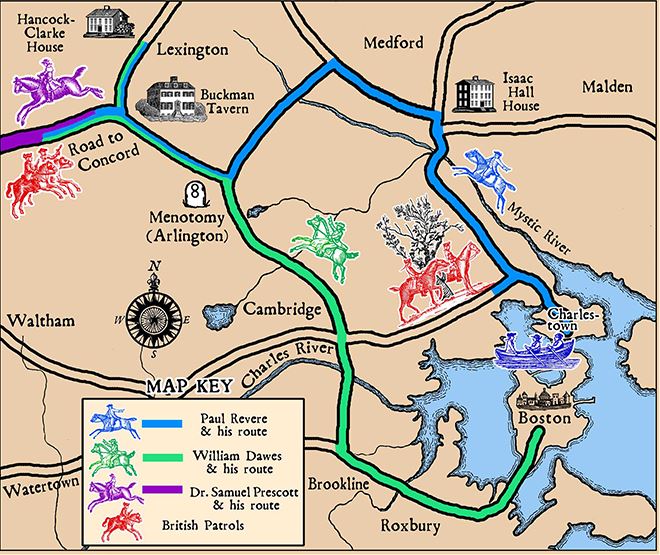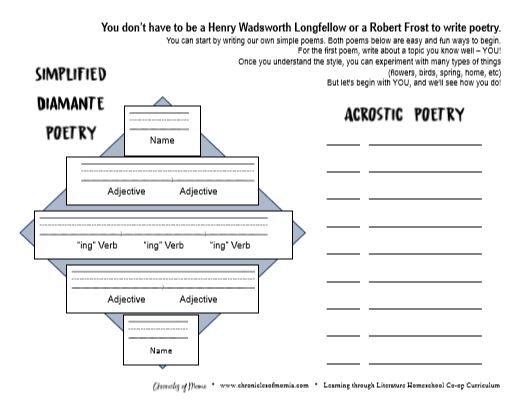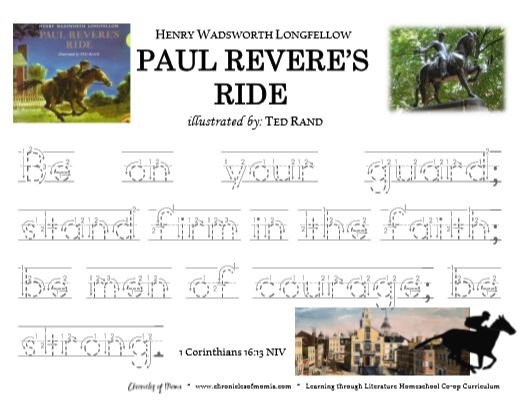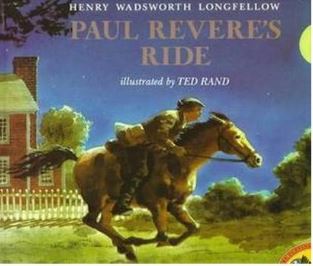If you’ve stumbled here from Pinterest, or some other site … welcome! While each of these books/lessons can stand alone, they are also a part of a year-long series that we have taught at our homeschool co-op. Each lesson builds in part on the one before. Some stories also have similar themes with the books that go before/after them. If you are interested in more information, or to see the complete booklist, check out our main page, More FIAR – Inspired Literature-Based Lesson Plans, especially for homeschool and homeschool co-ops. Thanks for looking around, and welcome to the site!
Paul Revere’s Ride
Paul Revere’s Ride Book
Paul Revere’s Ride Handwriting Sheet
Simple Poetry Worksheet
Paul Revere’s Ride Handwriting Sheet
Preview Paul Revere’s Ride:
If you have extra time, and want to show your class a wonderful, history via Cartoon, I LOVE LOVE LOVE Liberty Kids – and they did a great job on this episode. I like this one because it has very limited adds.
Review
If you’re following along with our Learning through Literature Homeschool Co-op Curriculum, this is the last week. Our local co-op finished the last week of April. Paul Revere’s Ride happened on April 18th, 1775 – so the story was timely and relateable. I also thought it was great to end the year with something a little different. Longfellow’s famous poem, and the timeliness of it, worked out perfectly. We also concluded our 1st semester with Robert Frost’s famous poem, Stopping by Woods on a Snowy Evening, so it was good to go back to Poetry again.
There is no need to do much of a review – except two things may be helpful to remember together. Whether you work them in here, or when you are teaching the lesson doesn’t matter – just refresh the class on these two things:
- Poetry – Do they remember Stopping by Woods on a Snowy Evening? Remind the class that poetry can rhyme, but doesn’t have to. It sometimes uses the same sound in a row (alliteration). It sometimes has the same number of sylables, or is read with a certain rhythm.
- What is an Adjective? Do they remember making the Lion’s Paws while studying Andy and the Lion by James Daughterty? How did they describe the Lion’s Paws? Remind them that an adjective is a desriptive word.
Introduce the Story
- Was America always a counry? (Yes, people lived here before (the Native Americans), but was America as we know it today a country?) – Not until 1776.
- The 13 Colonies were trying to get their Independence. They didn’t want to be under British rule, and taxed for things they didn’t have a say in.
- America was beginning to come together to fight the British. The British were coming to attack America. Word was spreading around that they were going to come attack the amory where the guns where, and to arrest their leaders. (Whether this was all true or not is uncertain).
- So Paul Revere and some others came up with a secret code
Discuss “Codes”
Then, we discussed codes.
- Morris Code (a series of beeps, long and short that communicated messages),
- SOS (taken from Morris Code, three long, three short, three long (lights or sounds) to signal help
- Smoke Signals (you may light a fire if you were lost on an island or on a mountain to alert someone you were there)
- the Ichthus / “Jesus Fish” symbol (the top part was made to say “Christians are meeting here or Christian’s nearby”, another would come by and make the bottom part to show they had received the message)
Read the Story
- The Old North Church – why would you shine the lights from up here (high up, visible)
- The vocabulary. The vocab is definitely above this age level, but if you read it slowly and deliberately, the pictures are significant and they will still understand what is going on.
- The route. We discussed it was not only Paul Revere who made this journey. He actually started out with William Dawes, going opposite routes in case someone got caught. They also met up towards the end with Dr. Samuel Prescott. It was these two, not Paul Revere, who finished the course after he was stopped (they got away). They travelled 18 miles, on horseback, through the night, stopping at many homes along the way. They knew who was friend and foe, and especially knew the houses to avoid (those who supported England)
- Below is a picture of the route from the Paul Revere House. (This also has some great additional historical information, if you’re interested)
 |
| Map and More Details Found Here: |
Class Activity: Poetry Practice
 |
| Click here for printable version |
Handwriting & Bible Memory:
 |
| Click here for printable version |
Extras
Or, you can check out the complete Learning the ABC’s through Literature Series, which is a similar series that we did with this same group of kiddos a year earlier. Both of these series of books have been inspired by the Five in a Row curriculum, with many of the books being the same. The ideas, implementation of it for a co-op, and printables are all my own, unless otherwise indicated.
Also – I would love to hear from you! If you have feed back, suggestions, or questions … or if you have used this in some way … please, share a picture, post a note, or just say hi. Especially if you’re using this for a co-op … it’s great to get ideas and share them around to help each other!





